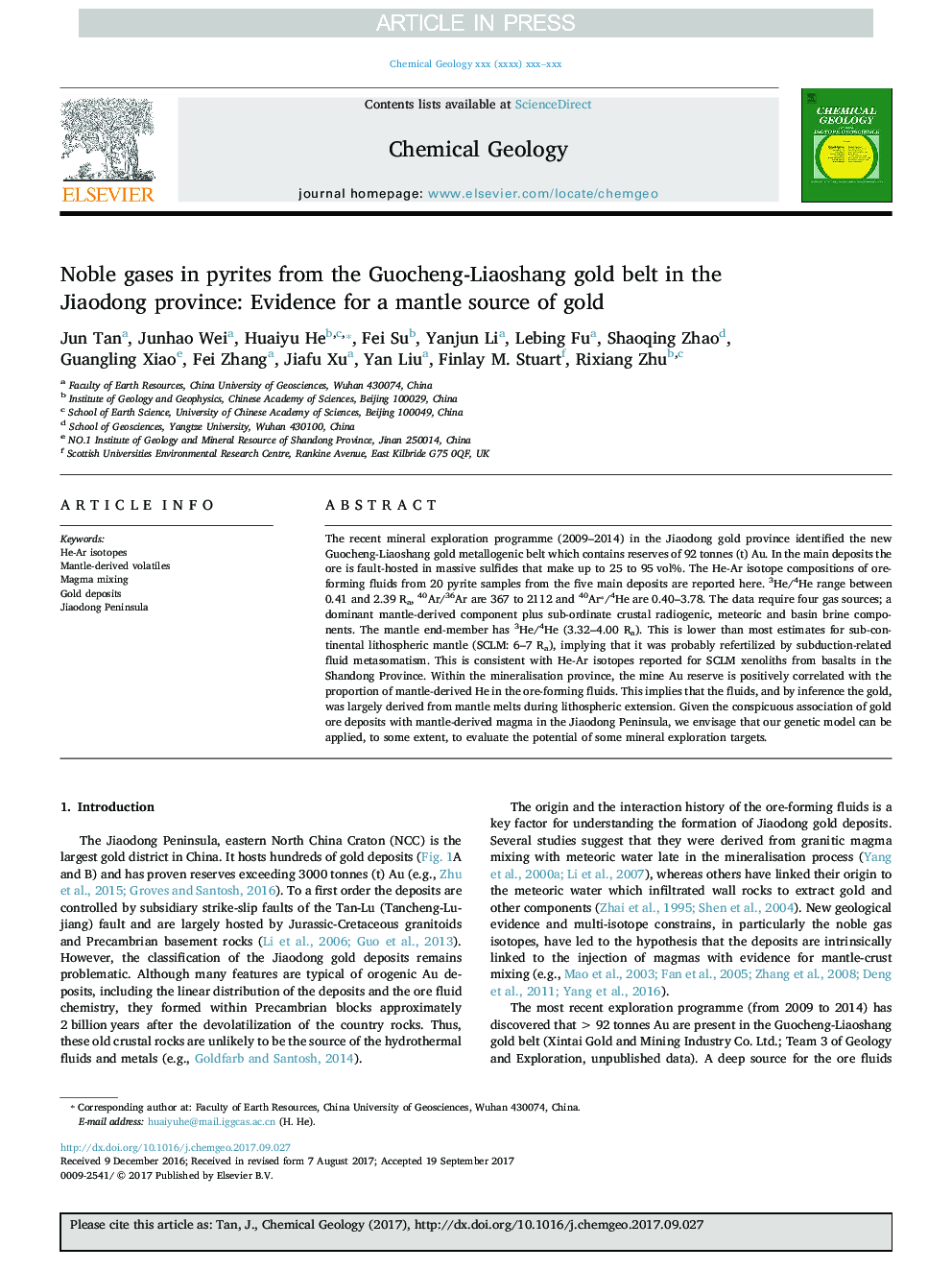| Article ID | Journal | Published Year | Pages | File Type |
|---|---|---|---|---|
| 8910364 | Chemical Geology | 2018 | 11 Pages |
Abstract
The recent mineral exploration programme (2009-2014) in the Jiaodong gold province identified the new Guocheng-Liaoshang gold metallogenic belt which contains reserves of 92Â tonnes (t) Au. In the main deposits the ore is fault-hosted in massive sulfides that make up to 25 to 95Â vol%. The He-Ar isotope compositions of ore-forming fluids from 20 pyrite samples from the five main deposits are reported here. 3He/4He range between 0.41 and 2.39 Ra, 40Ar/36Ar are 367 to 2112 and 40Arâ/4He are 0.40-3.78. The data require four gas sources; a dominant mantle-derived component plus sub-ordinate crustal radiogenic, meteoric and basin brine components. The mantle end-member has 3He/4He (3.32-4.00 Ra). This is lower than most estimates for sub-continental lithospheric mantle (SCLM: 6-7 Ra), implying that it was probably refertilized by subduction-related fluid metasomatism. This is consistent with He-Ar isotopes reported for SCLM xenoliths from basalts in the Shandong Province. Within the mineralisation province, the mine Au reserve is positively correlated with the proportion of mantle-derived He in the ore-forming fluids. This implies that the fluids, and by inference the gold, was largely derived from mantle melts during lithospheric extension. Given the conspicuous association of gold ore deposits with mantle-derived magma in the Jiaodong Peninsula, we envisage that our genetic model can be applied, to some extent, to evaluate the potential of some mineral exploration targets.
Related Topics
Physical Sciences and Engineering
Earth and Planetary Sciences
Geochemistry and Petrology
Authors
Jun Tan, Junhao Wei, Huaiyu He, Fei Su, Yanjun Li, Lebing Fu, Shaoqing Zhao, Guangling Xiao, Fei Zhang, Jiafu Xu, Yan Liu, Finlay M. Stuart, Rixiang Zhu,
